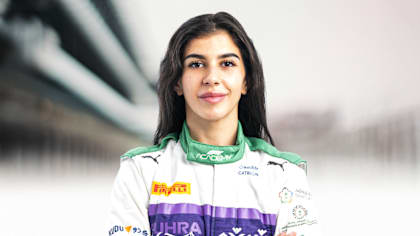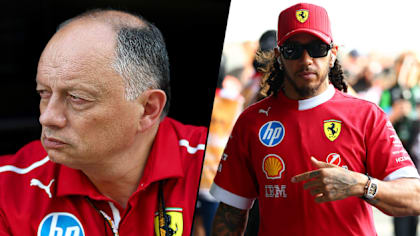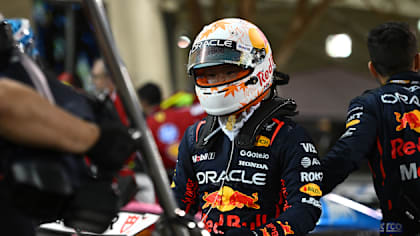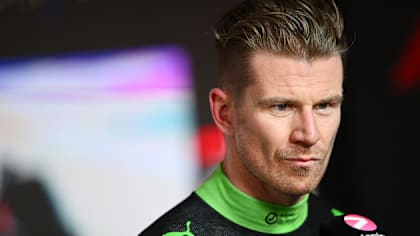
Feature
Jolyon Palmer’s Analysis: The Russian GP proved Sochi's Turn 2 needs a rethink for next year
Share

Turn 2 at the Sochi Autodrom caused a stir in Sunday’s Russian Grand Prix, offering up a first-lap accident and leading to numerous penalties being dished out to the drivers.
It’s not the corner itself at Turn 2 that is the issue, but the run-off area which caused a lot more of the drama.
The way the corner comes back on itself slightly means there is a kink on the exit that needs negotiating, but can easily be straightened because there is only tarmac run off behind a large kerb that can easily be cut if a driver out-brakes themselves.
Because of this, Michael Masi, the FIA Race Director, imposed a rule that states that drivers must drive in between polystyrene blocks, way off to the left of the run-off area next to the wall, in an effort to not only stop drivers cutting the corner to gain an advantage, but also to ensure they rejoin safely into the flat-out Turn 3.
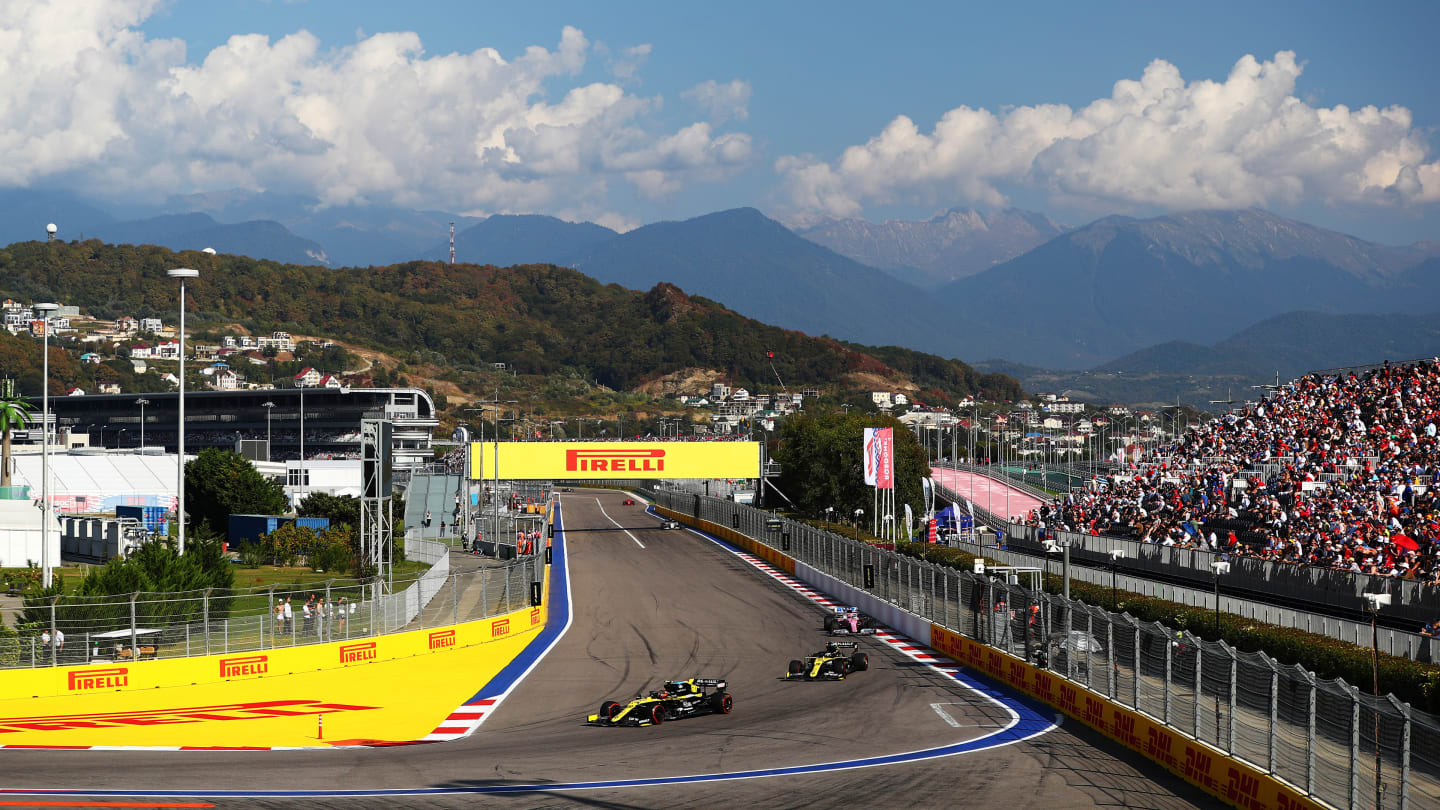
Daniel Ricciardo fell foul of Turn 2 when he locked up passing team mate Esteban Ocon, and was hit with a five-second time penalty
But actually this ruling seems to be causing more harm than good.
We’ve seen evidence of the potential problems here in GP2 or F2 races in the past, where young and over exuberant drivers cut the corner on the first lap and keep flat out through the run off to rejoin as fast as possible and not lose too many positions, but ultimately either collide with each other in the run off as they did last year in F2, or hit the wall as Artem Markelov did back in GP2 in 2015 before rejoining on three wheels in front of the pack.
READ MORE: Did Bottas really compromise his qualifying in Sochi to ensure Russian GP victory?
On Sunday the Turn 2 run-off issue reared its head in Formula 1 for the first time as Carlos Sainz repeated Markelov’s GP2 crash five years on.
Sainz ran deep into Turn 1 and had Lance Stroll on his inside. That meant he was forced wide even if his natural momentum wasn’t taking him there, and being aware of the rules he turned left and headed for the blocks to rejoin in the correct way.
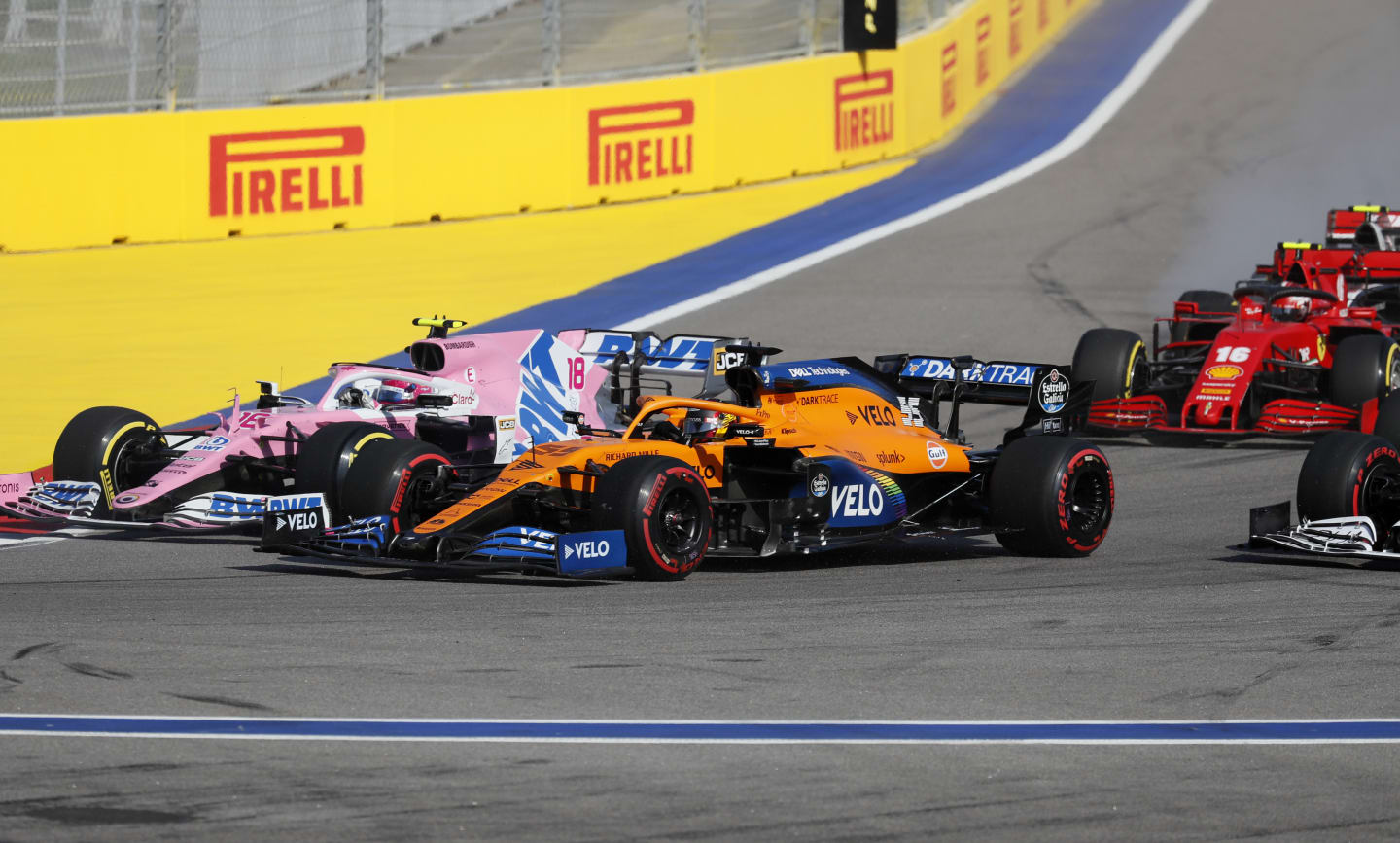
Seconds before the crash: With Lance Stroll on his inside, Carlos Sainz was forced wide and into the run-off area
Inevitably when a driver does this they go as fast as possible to not lose too many positions – after all they are in a race.
Verstappen ahead had a slightly better line through the low-grip bollarded area, because he bailed out of Turn 2 so early, and could carry enough speed through it to not lose position.
Sainz’s effort to keep on the track initially through the corner meant that by the time he wanted to head to the blocks he was coming at a tighter angle and had to slow down significantly more to make it through. He didn’t and he crashed.
READ MORE: Sainz blames 'misjudgement' for race-ending opening lap crash in Russia
Had Sainz slowed down, though, he would have rejoined towards the back of the field, because the blocks were in too punishing a position for drivers who nearly make the corner. Russell and Albon followed Sainz through the run off and rejoined at the back of the field.
ONBOARD: Carlos Sainz out after hitting Turn 2 barrier at Russian GP
That is what encourages drivers to push through a low-grip run-off area next to a wall. What is there in part for safety has ended up becoming a more dangerous option.
Aside from the start crash there were penalties throughout the Grand Prix for drivers who didn’t fancy going around the bollard.
Daniel Ricciardo and Alex Albon were both penalised for opting not to take the run off, and actually because the time loss is so high in doing it the penalty didn’t affect them too much.
Romain Grosjean had a few trips through the run off and on his first occasion he lost a couple of seconds, because he bailed out early and managed to straight-line the bollards.
2020 Russian Grand Prix: Bollards fly as Vettel and Grosjean collide
On his second trip through he was fighting with Sebastian Vettel and went wide later, before smashing into the bollards as he decided the fully correct action would be too slow, even so he lost around four seconds.
This shows why Daniel Ricciardo was not overly worried by his five-second penalty – it would have cost him something similar to go through the run off anyway by the time he hadn’t made it back in front of the Turn 2 exit kerb.
Several drivers have expressed their displeasure over the run-off area and how it’s handled, and some have even questioned whether the actual corner can change to make the run off behind the exit kerb less of a factor, rather like the first corner in Bahrain.
Carlos Sainz says Sochi Turn 2 chicane 'not well designed'
It’s the tarmac run off that is the enticing factor in the first place for drivers to push the braking zone to the limit. You can guarantee if there was gravel on the outside there would be far fewer drivers ploughing into it than are going into the current run-off area.
Rather like track limits lap deletions, the punishment for drivers is never quite as stark as the threat of a crash with gravel or a wall on the outside – that always focusses the drivers' minds a lot more.
Whether it’s a gravel run-off area, an amended Turn 2 layout, or at the very least a rethink on these bollard rules, I hope something changes for next year because whilst these run-off areas are a constant headache for the FIA to get right, I don’t think Turn 2 in Sochi has the solution just yet.
READ MORE: Who were the Winners and Losers of the 2020 Russian Grand Prix?
YOU MIGHT ALSO LIKE
News Farah AlYousef announced as Wild Card entry for Round 2 of the 2025 F1 ACADEMY season in Jeddah
News Vasseur urges Ferrari to ‘stay calm’ after mixed fortunes in Bahrain as he explains why Hamilton’s frustration was ‘appreciated’
Feature FACTS AND STATS: McLaren’s first Bahrain win and Red Bull’s first double score of 2025
News Hulkenberg disqualified from Bahrain Grand Prix over skid block breach

